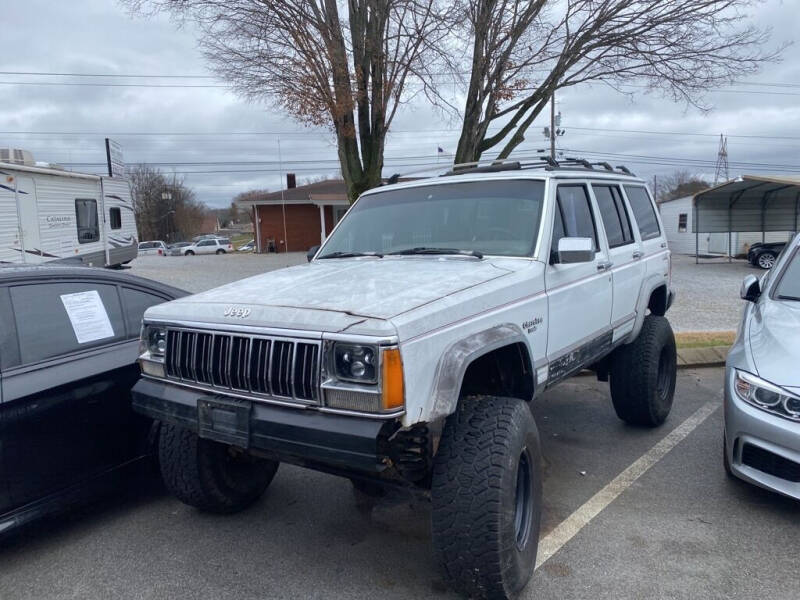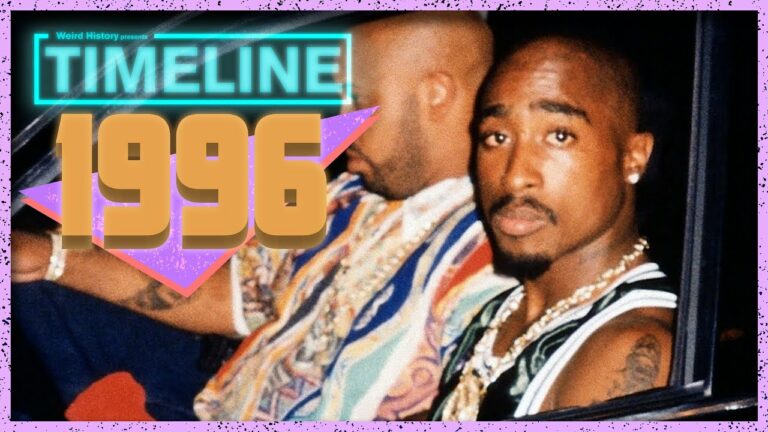Jeep Cherokee 1992 For Sale: Discovering a Timeless Icon
Jeep Cherokee 1992 For Sale: Discovering a Timeless Icon jeeps.truckstrend.com
In the ever-evolving landscape of automotive design, some vehicles transcend their production years to achieve a legendary status. The 1992 Jeep Cherokee (XJ generation) is undoubtedly one such vehicle. More than just a relic of the early 90s, the XJ Cherokee stands as a testament to rugged simplicity, unparalleled off-road capability, and a design that remains remarkably relevant and appealing today. For enthusiasts, off-road adventurers, and those simply seeking a robust and characterful daily driver, the prospect of finding a well-preserved 1992 Jeep Cherokee for sale presents an exciting opportunity to own a piece of automotive history that still delivers on its promises.
This comprehensive guide delves into everything you need to know about the 1992 Jeep Cherokee XJ, from its enduring appeal and what to look for when buying, to the benefits and challenges of ownership, providing practical advice to help you navigate the market and make an informed purchase.
Jeep Cherokee 1992 For Sale: Discovering a Timeless Icon
The Enduring Appeal of the 1992 Jeep Cherokee XJ
The Jeep Cherokee XJ, produced from 1984 to 2001, revolutionized the SUV market by introducing a unibody construction that offered a lighter, more maneuverable, and fuel-efficient alternative to traditional body-on-frame SUVs. The 1992 model year falls squarely within the sweet spot of the XJ’s production run, benefiting from years of refinement while retaining the no-nonsense charm of its predecessors.
What makes the 1992 XJ so sought after?
- Legendary Powertrain: The star of the show is often the robust 4.0-liter "High Output" inline-six (I6) engine. Known for its torque, durability, and surprising longevity, this engine, paired with the equally reliable Aisin-Warner AW4 automatic transmission or the sturdy AX-15 manual, creates a powertrain combination that is difficult to beat for its era. A less common 2.5-liter inline-four was also available, offering better fuel economy but significantly less power.
- Unmatched Off-Road Prowess: Thanks to its compact size, excellent approach and departure angles, solid axles (Dana 30 front, Dana 35 or optional Chrysler 8.25 rear), and proven four-wheel-drive systems (Command-Trac NP231 part-time 4WD or Selec-Trac NP242 full-time/part-time 4WD), the XJ is a highly capable off-roader right out of the box.
- Simple, Iconic Design: Its boxy, utilitarian aesthetic has aged gracefully, projecting an image of capability and no-frills adventure. The interior, while basic by modern standards, is ergonomic and durable.
- DIY-Friendly: The XJ’s relatively simple mechanicals make it a favorite among home mechanics. Maintenance and common repairs are often straightforward, and parts are widely available and affordable.
- Customization Potential: A massive aftermarket industry exists for the XJ, offering everything from lift kits and heavy-duty bumpers to engine performance upgrades, allowing owners to tailor their vehicle precisely to their needs and desires.

What to Look For When Buying a 1992 Jeep Cherokee
Finding a good 1992 Jeep Cherokee for sale requires a keen eye and thorough inspection. While their reputation for durability is well-earned, age and neglect can take their toll.
- Rust: This is arguably the biggest enemy of the XJ. Pay meticulous attention to:
- Unibody Frame Rails: Especially near the front control arm mounts and behind the rear wheels.
- Floorboards: Check under the carpet for soft spots.
- Rocker Panels: These are prone to rot.
- Rear Quarter Panels: Above the rear wheels.
- Door Sills and Tailgate: Look for bubbling paint or perforations.
- Exhaust System: Check for significant corrosion.

- Engine (4.0L I6):
- Oil Leaks: Common around the rear main seal, valve cover, and oil filter adapter. While not always critical, extensive leaks indicate neglect.
- Cooling System: Check the radiator, hoses, water pump, and thermostat housing for leaks or signs of overheating. A healthy cooling system is vital.
- Exhaust Manifold Cracks: Listen for ticking noises, especially on cold starts.
- Maintenance: Ask about oil change frequency and coolant flushes.
- Transmission (AW4 Automatic / AX-15 Manual):
- AW4: Should shift smoothly without harsh clunks or slipping. Check the fluid level and color (should be reddish, not dark brown or burnt).
- AX-15: Listen for grinding gears, especially between shifts. Check clutch engagement.
- Transfer Case (NP231 / NP242):
- Engage 4WD (High and Low range) and listen for clunks or grinding. Ensure the lever shifts smoothly.
- Check for leaks around the seals.
- Suspension and Steering:
- "Death Wobble": A violent, uncontrollable shaking of the front end, often caused by worn steering components (tie rod ends, drag link, track bar) or suspension bushings. Test drive on rough roads.
- Shocks and Springs: Look for worn shocks (leaks, bouncing) and saggy springs (especially rear leaf springs).
- Bushings: Inspect control arm bushings and sway bar bushings.
- Electrical System: Test all lights, gauges, power windows, door locks, and the HVAC system. Age can lead to quirky electrical issues.
- Interior Condition: Check the condition of the seats (tears, foam collapse), headliner (sagging), dashboard (cracks), and carpet. These indicate overall care.
- Maintenance Records: A well-documented service history is a huge plus, showing responsible ownership.

Benefits of Owning a 1992 Jeep Cherokee
Despite its age, the 1992 XJ offers compelling advantages that continue to attract buyers:
- Affordable Entry: Compared to newer SUVs with similar capabilities, the purchase price of an XJ is often remarkably low, making it an excellent budget-friendly option for off-roading or a secondary vehicle.
- Unparalleled Durability: When properly maintained, the 4.0L I6 engine and AW4 transmission are known to last for hundreds of thousands of miles, making the XJ a surprisingly reliable workhorse.
- Go-Anywhere Capability: Its compact size, robust drivetrain, and solid axles mean it can tackle trails that would stop many larger, more modern SUVs in their tracks.
- Simplicity and Repairability: The absence of complex electronics and sophisticated computer systems makes the XJ easier and cheaper to diagnose and repair. Many common fixes can be done in a home garage.
- Strong Community and Aftermarket: A vast and passionate community of XJ owners provides a wealth of knowledge, support, and readily available aftermarket parts for upgrades, repairs, and modifications.
- Classic Status and Potential Appreciation: Well-preserved, unmolested XJs are slowly gaining collector status, meaning a good example could potentially hold or even increase its value over time.
Potential Challenges and Solutions
Ownership of an older vehicle like the 1992 XJ isn’t without its quirks. Awareness of these challenges can help you prepare:
- Age-Related Wear and Tear: Expect to replace worn components. Proactive maintenance and setting aside a repair budget are crucial. Solution: Embrace DIY, learn about common XJ issues, and find a reliable mechanic familiar with older Jeeps.
- Fuel Economy: The 4.0L I6 is a thirsty engine, typically delivering 15-20 MPG. Solution: This isn’t a commuter car for fuel efficiency. Accept it, or consider a smaller engine option (if available and you can find one) or limit its use for specific purposes.
- Safety Features: Lacks modern airbags, ABS, traction control, and stability control. Solution: Drive defensively, be aware of its limitations, and consider upgrading lighting and brakes for improved visibility and stopping power.
- Rust Mitigation: If you live in a rust-prone area, continuous rust prevention (undercoating, regular washing) is essential, especially after winter. Solution: Prioritize a rust-free example, or budget for professional rust repair if you fall in love with a slightly rusty one.
- Finding a Good Example: Many XJs have been heavily modified, neglected, or abused. Finding a well-maintained, relatively stock example can be a challenge. Solution: Be patient, expand your search radius, and be prepared to travel for the right vehicle.
Tips for a Successful Purchase
- Set a Realistic Budget: This includes the purchase price, immediate maintenance/repairs, insurance, and potential upgrades.
- Do Your Homework: Research common XJ issues (as outlined above) and familiarize yourself with what a well-maintained XJ should look and sound like.
- Thorough Inspection is Key: Don’t rush. Use a checklist. Bring a flashlight and get underneath the vehicle. If you’re not mechanically inclined, pay for a pre-purchase inspection (PPI) by a trusted mechanic who specializes in 4x4s or older vehicles.
- Test Drive Extensively: Drive it on various surfaces – highway, city, and if possible, a gravel road or uneven terrain to test the 4WD. Listen for noises, feel for vibrations, and test all gears, brakes, and steering.
- Check VIN and History: Run a VIN check for accident history (though older records might be sparse). Ask the seller for maintenance records.
- Negotiate Based on Condition: Don’t be afraid to point out flaws and negotiate the price accordingly. Knowledge is power.
- Consider Your Use Case: Are you building an extreme off-roader, a daily driver, or a weekend adventure vehicle? This will influence what kind of XJ you should look for (e.g., a stock, low-mileage example vs. one that’s already lifted).
Estimated Pricing Guide for 1992 Jeep Cherokee XJ
The price of a 1992 Jeep Cherokee XJ can vary widely based on condition, mileage, modifications, engine/transmission combination, and regional demand. This table provides a general guide:
| Condition Category | Description | Estimated Price Range (USD) | Key Influencing Factors |
|---|---|---|---|
| Poor | Significant rust (frame, body), major mechanical issues (engine, transmission), non-functional essential systems, extensive interior damage, high mileage (250,000+). Often a project vehicle or parts donor. | $500 – $2,500 | Severity of rust, extent of mechanical failure, completeness of vehicle, non-running status. |
| Fair | Moderate rust (surface, minor perforations), some mechanical issues (leaks, worn suspension), cosmetic flaws, high mileage (180,000 – 250,000). Requires immediate attention for reliability/safety, but potentially a solid base. | $2,500 – $5,000 | Extent of rust repair needed, number/cost of immediate mechanical repairs, drivetrain (4.0L preferred), 4WD functionality. |
| Good | Minimal rust (surface only, easily addressed), mechanically sound with minor age-related wear (e.g., small oil leaks, worn bushings), decent interior, average mileage (120,000 – 180,000). Runs and drives well, suitable for daily driving with routine maintenance. | $5,000 – $9,000 | Low rust, strong running 4.0L, functional 4WD, relatively clean interior, history of regular maintenance, desirable trim (e.g., Laredo, Limited). |
| Excellent | Near rust-free body and frame, exceptionally clean interior, meticulously maintained 4.0L engine, smooth transmission and transfer case, low mileage (under 120,000), minimal or no modifications. Often garage-kept. | $9,000 – $15,000+ | Rust-free condition, very low mileage, comprehensive service records, originality, unmolested condition, rare color/trim, overall pristine presentation. |
Note: Prices can fluctuate based on region, specific trim level (e.g., Limited, Laredo, Sport), 2-door vs. 4-door, and whether it’s 2WD or 4WD.
Frequently Asked Questions (FAQ) about the 1992 Jeep Cherokee
Q: Is the 4.0L engine in the 1992 Cherokee reliable?
A: Absolutely. The AMC 4.0-liter "High Output" inline-six engine is legendary for its durability and longevity. With proper maintenance, many have exceeded 300,000 miles. Common issues are usually minor, like oil leaks or exhaust manifold cracks.
Q: What is "death wobble" and how do I avoid it?
A: "Death wobble" is a violent, uncontrollable oscillation of the front wheels, typically occurring at highway speeds after hitting a bump. It’s usually caused by worn or loose steering and suspension components (e.g., track bar, tie rods, ball joints, control arm bushings). To avoid it, ensure all front end components are tight and in good condition, and maintain proper alignment.
Q: Are parts still available for the 1992 Jeep Cherokee?
A: Yes, parts availability is excellent! Due to its long production run and immense popularity, both OEM and aftermarket parts are readily available from dealerships, auto parts stores, and online retailers.
Q: Is a 1992 Cherokee good for daily driving?
A: It can be, especially if well-maintained. However, be aware of its relatively poor fuel economy, lack of modern safety features (airbags, ABS), and potentially rougher ride compared to contemporary vehicles. For those who appreciate its rugged simplicity, it makes a perfectly capable daily driver.
Q: Can I easily lift a 1992 Cherokee for off-roading?
A: Yes, the XJ is one of the easiest and most popular vehicles to lift. A vast aftermarket offers lift kits ranging from mild 2-inch boosts to extreme 6-inch+ kits. However, be aware that lifting requires addressing other components like longer control arms, brake lines, and potentially new driveshafts to maintain proper geometry and reliability.
Q: What’s the difference between the NP231 and NP242 transfer cases?
A: The NP231 (Command-Trac) is a part-time 4WD system, meaning it should only be used on loose or slippery surfaces (snow, dirt, sand). The NP242 (Selec-Trac) offers a "Full-Time 4WD" option, allowing it to be used on dry pavement as well as off-road, in addition to its part-time 4WD modes. The NP242 is generally considered more versatile for mixed driving conditions.
Conclusion
The 1992 Jeep Cherokee XJ, when found in good condition, represents a remarkable value proposition for anyone seeking a capable, iconic, and genuinely rewarding vehicle. It embodies an era of automotive manufacturing where simplicity and ruggedness reigned supreme, leading to a vehicle that is both a joy to drive off-road and surprisingly practical for everyday use. While buying an older vehicle requires diligence and a willingness to perform occasional maintenance, the enduring appeal, strong aftermarket support, and vibrant community surrounding the 1992 Cherokee make it a compelling choice. For the right buyer, a 1992 Jeep Cherokee for sale isn’t just a transaction; it’s an invitation to join a legacy of adventure and ownership of a true American automotive legend.






